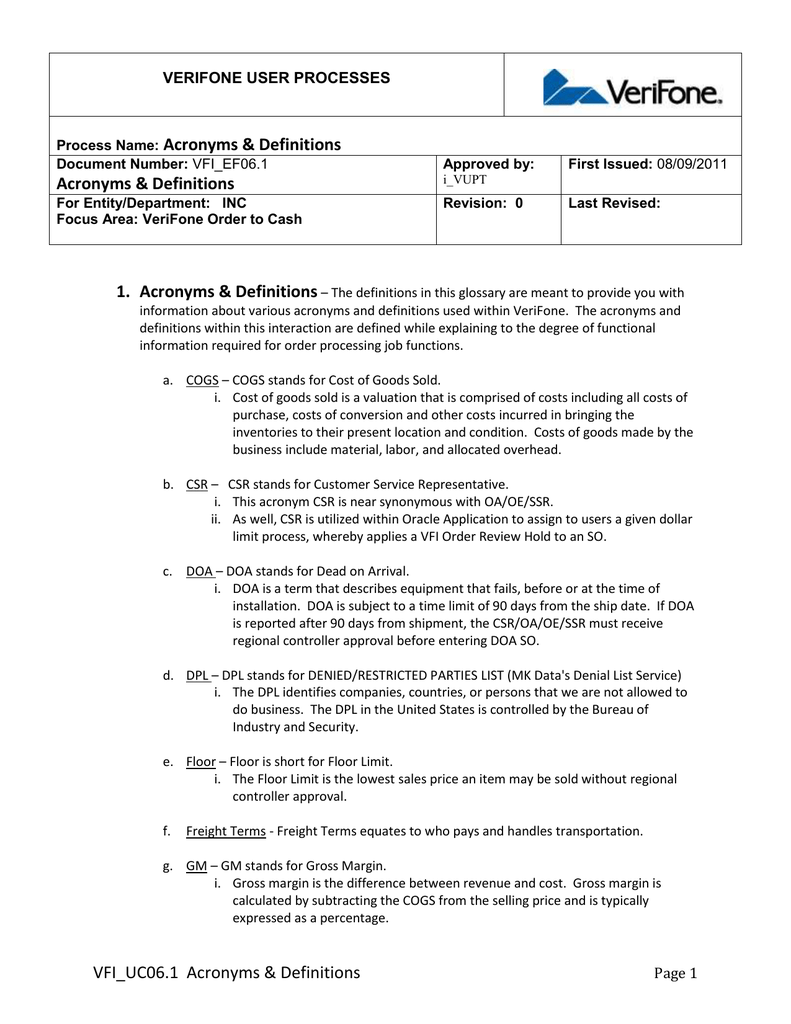In the world of IT, there are many acronyms and definitions that can be confusing for those who are not familiar with the industry. Understanding these terms is important for effective communication and collaboration within the IT community. Here are some of the most commonly used IT acronyms and their definitions:
API

An API, or Application Programming Interface, is a set of protocols, routines, and tools for building software applications. APIs enable different software applications to communicate with each other and share data.
BI

BI, or Business Intelligence, refers to the technologies, applications, and practices for the collection, integration, analysis, and presentation of business information. The goal of BI is to provide decision-makers with the insights they need to make informed business decisions.
CMS

A CMS, or Content Management System, is a software application that allows users to create, manage, and publish digital content, such as web pages, blog posts, and online articles. CMSs are used by businesses, organizations, and individuals to manage their online content.
CRM

CRM, or Customer Relationship Management, refers to the practices, strategies, and technologies that companies use to manage and analyze customer interactions and data throughout the customer lifecycle. The goal of CRM is to improve customer retention and drive sales growth.
CSS

CSS, or Cascading Style Sheets, is a style sheet language used for describing the presentation of a document written in HTML or XML. CSS is used to control the layout, typography, and color of web pages and other digital content.
HTML

HTML, or Hypertext Markup Language, is the standard markup language used for creating web pages and other digital content that can be displayed in a web browser. HTML is used to structure content and define its meaning and purpose.
HTTP

HTTP, or Hypertext Transfer Protocol, is the protocol used for transferring data over the World Wide Web. HTTP is used by web browsers and web servers to communicate with each other and exchange data.
IP

IP, or Internet Protocol, is the protocol used for communicating data over the internet. IP is responsible for routing data packets between devices on the internet and ensuring that they arrive at their intended destination.
ISP

An ISP, or Internet Service Provider, is a company that provides internet access to customers. ISPs offer a variety of internet connection options, including dial-up, DSL, cable, and fiber optic.
LAN

A LAN, or Local Area Network, is a network that connects computers and other devices within a limited physical area, such as a home or office building. LANs are often used for sharing resources, such as printers and internet connections, and for enabling communication between devices.
OS

An OS, or Operating System, is the software that manages a computer's hardware and software resources and provides common services for computer programs. Examples of operating systems include Windows, MacOS, and Linux.

PDF, or Portable Document Format, is a file format used for representing documents in a manner that is independent of the software or hardware used to create or view the document. PDF files can be viewed and printed on any device with a PDF viewer.
QA
QA, or Quality Assurance, refers to the process of ensuring that a product or service meets the required quality standards. QA is often used in software development to ensure that software products are free of defects and meet user requirements.
SQL

SQL, or Structured Query Language, is a programming language used for managing and manipulating relational databases. SQL is used to create, modify, and query databases, and is widely used in database management systems such as MySQL, Oracle, and Microsoft SQL Server.
SSD

An SSD, or Solid-State Drive, is a type of storage device that uses NAND-based flash memory to store data. SSDs are faster and more durable than traditional hard disk drives, and are often used in high-performance computing applications.
UI

A UI, or User Interface, is the visual and interactive part of a software application that allows users to interact with the application and perform tasks. UI design is an important part of software development, as it can greatly impact the usability and user experience of an application.
URL

A URL, or Uniform Resource Locator, is a web address that identifies the location of a resource on the internet. URLs are used to access web pages, files, images, and other resources on the World Wide Web.
VPN

A VPN, or Virtual Private Network, is a secure network connection that allows users to access the internet and other network resources securely and privately. VPNs are often used by businesses and individuals to protect their online privacy and security.
WAN

A WAN, or Wide Area Network, is a network that spans a large geographic area, such as a country or continent. WANs are used to connect multiple LANs and enable communication between devices over long distances.
Conclusion
These are just a few of the many IT acronyms and definitions that you may come across in your work or studies. By understanding these terms, you can improve your communication and collaboration within the IT community, and better understand the technologies and practices that drive the digital world.